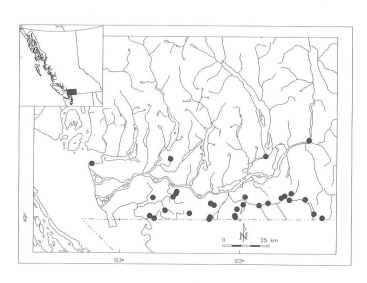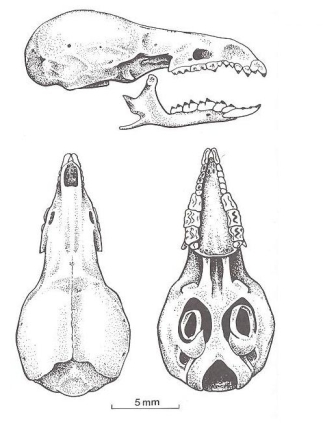In the United States, Trowbridge's Shrew has an earlier breeding season than other shrew species. Reproductive activity begins in February, with females reaching sexual maturity several weeks after males. Pregnant females have been observed from February to late May, with most reproductive activity finished by June. In western Oregon, 97 per cent of the females captured in May were either pregnant or nursing, and few breeding females were found after June. The number of embryos ranges from three to six, with four or five most common. Females are capable of producing at least two litters during a breeding season. The meagre data available for British Columbia suggests a similar breeding season. Dates for pregnant females range from 24 March to early May, and nursing females have been found in May and early June.
|
The diet of Trowbridge's shrew consists of a diverse assortment of soil-dwelling and surface-dwelling invertebrates. Major prey types include centipedes, spiders, slugs, snails, beetles, and other adult and larval insects. This shrew also consumes plant material: fungi, including underground fungi or truffles, have been found in the stomachs of a few individuals, and several researchers have noted this shrew's tendency to feed on seeds from coniferous trees such as Douglas-fir. Captive animals readily consumed seeds from various herbs, shrubs and trees. Hoarding behaviour was common among captives; they transported seeds a considerable distance from the feeding trays and then buried them for later consumption.
|
Although there are no estimates of absolute numbers, there is evidence to suggest that Trowbridge's Shrew is the most common shrew in many coastal habitats. Results from recent United States Forest Service surveys in the Cascade Range of Oregon and Washington revealed that this shrew was the most common small mammal in Douglas-fir forests. Similarly, it is the most abundant shrew in the lower Fraser River valley of British Columbia.
Captive Trowbridge's Shrews demonstrate short periods of activity at regular intervals over a 24-hour period; they are active about 39 per cent of the time, mostly after dark. Animals in breeding condition are more active than young animals or nonbreeding adults.
Owls, especially the Barn Owl, are probably the major predators of Trowbridge's Shrew in British Columbia.
|
|



